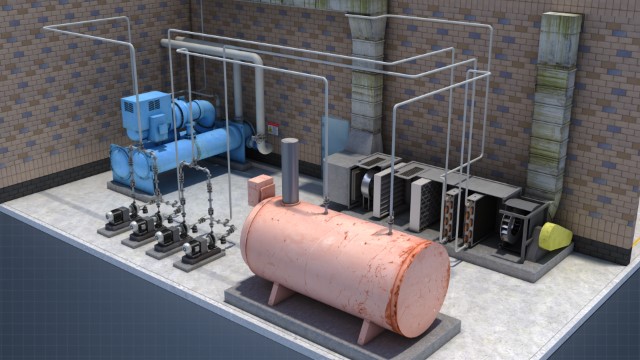




HVAC – Hot Water and Ventilation
The purpose of heating, ventilation, and air conditioning systems (commonly referred to as HVAC systems) is to provide environments that are comfortable for people and allow equipment to operate safely and reliably. HVAC systems are used in residential, commercial, and industrial facilities. This module contains information on hot water heating systems, air distribution systems, and HVAC control systems.
Request a demoCourse Details
Learning Objectives
• Identify the four main components of a hydronic (hot water) heating system
• Identify the safety devices typically installed on hot water boilers
• Identify and describe the components of a hot water boiler
• Identify and describe the types of fans, dampers, and filters that are commonly used in HVAC duct systems
• Identify and describe primary flows
• List the components used in HVAC control systems
• Describe the main types of HVAC control systems
• List important inspections and points to monitor in HVAC systems
Specs
| Course Level | Intermediate |
| Languages | English |
| Compatibility | Audio, Video |
| Based on: | Industry Standards and Best Practices |
Key Questions
What are the four main components to a hydronic heating system?
The four main parts to a hydronic heating system are: a hot water boiler to supply heat; piping and pumps to distribute heat; radiators and/or convectors to emit heat; and control equipment to control water and room temperatures.
What variables do automatic control systems control?
Automatic control sysems used by HVAC systems control: temperature, humidity, pressure, and ventilation (or air distribution).
What are the three safety devices are typically seen with a hot water boiler?
Hot water boilers are typically equipped with safety relief valve to prevent over-pressurization, low-water cutoff to shut off fuel to the boiler on low water, and water-gauge glass to verify the water level.
Why are filters used in HVAC systems?
Filters are used in HVAC systems to remove particulate contaminants from the air stream in distribution ducts.
Sample Video Transcript
All air systems can be single duct or dual duct. Single duct systems provide cooling and heating using the same duct, but cannot provide them simultaneously. Dual duct and multi-zone systems can provide heating and cooling simultaneously. A dual duct system employs two air ducts, a cold air duct and a warm air duct, which run parallel to each other. In an air water system, both air and water are used for temperature control in the condition to spaces. The air and water are cooled or heated in a central plant. The air supplied is called primary air, and the water is called secondary water. Ducting systems with fans distribute the air and water pipelines, and pumps distribute the water.
Course Applies To
Demos + Pricing
Learn more about our courses, get pricing, and see our platform.











